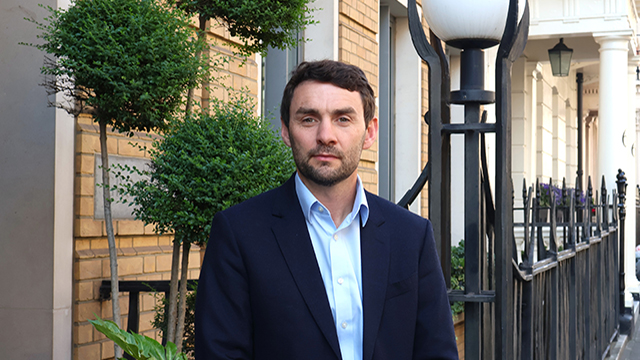London’s deputy mayor for planning wants developers, local authorities and the GLA to get around the table for the sake of a better built environment
In the depths of City Hall, planners are watching you – 78 of them, to be precise. They are scrutinising your developments, crunching the numbers on your viability assessments, and they want to speak to you.
Leading the conversation is Jules Pipe, London’s deputy mayor for planning, regeneration and skills. A firm believer in the value of collaboration, Pipe is adamant that the public sector has a vital role to play in the planning process and reshaping of the nation’s towns and cities.
“High streets and places aren’t going to come about by market forces,” Pipe argues. “It needs active intervention and active curation. That does mean the [involvement from] public sector and local authorities to develop a vision with local people.”
Such an approach could be challenged. On 7 May, Londoners will vote on a new mayor and new policies. At the same time, the government is due to release a planning White Paper, amid promises of fast-track schemes, eschewing local authorities. Experts say the planning system is “on its knees” and a radical reform is on the cards.
But although central government may be pursuing an agenda of planning deregulation under the reign of former London mayor Boris Johnson, his successor and team at the Greater London Authority remain – for now – prescriptive and hands-on.
“If we are going to build denser to make places work, they have to be of a high quality,” Pipe says. “That has to be teased out between the developer and the planner.”
Pipe is bound from advocating mayoral candidates or parties. But on the changes coming from central government and development in London, he is direct: “We have to build places of quality that facilitate local employment and not just a dormitory or an under-invested transport system.”
Local authority deadlocks
Open and early conversations between local authorities, developers and the GLA can be instrumental in helping projects to avoid delays and escalating costs, Pipe says.
More than two years after Grosvenor Britain & Ireland first unveiled plans for a £1bn build-to-rent neighbourhood on the 12-acre site of a former biscuit factory in Bermondsey, the GLA finally approved the plans last week.
After Southwark Council rejected the development last year, Grosvenor returned with a revamped scheme including an extra 206 affordable homes to meet the mayor’s criteria, which was then approved by Pipe and his team. But the drawn-out process cost Grosvenor. Between 2017 and 2019, viability assessments reveal a £5m loss in value of land and a £67m uptick in construction costs.
Some parts of London have become more challenging for developers to work in due to a growing distrust of the property industry, Pipe says. Last year, a survey of more than 2,000 people by Grosvenor found that only 2% of the general public trusted real estate developers, and only 7% trusted local authorities.
“Some boroughs have been hit by a crisis of mistrust between the community and development,” Pipe says. “There are a lot of factors at play there.”
The key issue is lack of affordable housing, he adds, and attempts to pack in more affordable homes typically lead to denser, higher development. “This raises the question of what’s in it for the local community.”
Pipe says getting the developer, the borough and the GLA around one table is essential. “That is one of the most valuable things people can do to de-risk schemes, getting that certainty and speeding up the process.”
Contrary to the efforts of Whitehall, with its promises of expanded permitted development rights, permission in principle and potential weakening of council powers to veto schemes, Pipe says the boroughs and the GLA have a role in balancing community and developer priorities. “You either have laissez-faire, no social benefit, heavily formulated regimes that stifle development, or you have the in-between that we have, which is on a case-by-case basis.”

Sheds and beds
That is not to say that the GLA isn’t guilty of heavily formulated regimes of its own. Take the new draft London plan. It has done away with the complex density matrix, but it still provides a highly in-depth step-by-step guide. This “blueprint for development” spells out the mayor’s priorities in a 622-page document that includes 677 references to “housing”, 477 to “infrastructure” and 287 uses of “industrial”.
Khan entered City Hall in 2016 with big ambitions on housing, raising the new homes target from 42,000 to 66,000 a year. This has since been cut to 52,285, but Khan remains steadfast on preserving “strategic industrial land”, or SIL, despite the housing shortfall.
“When the mayor first came into City Hall there were a couple of sites that were always zoned for industrial,” Pipe says. “Yet, because someone snapped them up very cheaply and said it would be great for housing, they declared it a housing zone. There was a bit of disappointment when we got in and said ‘no’.”
A number of schemes, most notably Cain Hoy and Galliard’s 946-home Peruvian Wharf, E16, fell foul of the mayor’s SIL protections. But developers are now conjuring up ways to retain SIL and bring in new homes. At Orchard Wharf, E14, Regal London is working with the GLA to reactivate the freight logistics port, with residential space on top. At phase one of Silvertown Quays, E16, Lendlease will deliver 1,000 homes and also return industrial sites to use, decades after they were left vacant.
“As is happening at Silvertown, we would really encourage double and treble-decking of SIL, which would free up SIL elsewhere,” Pipe says. “Don’t come and cherry pick plots to flip in the middle of SIL. Don’t do the easy option that’s the quick buck – come and talk to us about something that is more plan-led.”
He adds that after decades in the works, London is closer than ever to unlocking the Thames for freight and last-mile logistics. Megaport DP World London Gateway in Docklands currently sends most of its cargo up the A13, but when the port opens, ships will replace the 2,000 daily truck visits.
“There are real plans,” Pipe says. “Because of the climate emergency we are closer than ever to getting people wanting to use the river.”
Fronting the cost of infrastructure
Pipe is emphatic about the need for better infrastructure, and specifically transport, to unlock pockets of London for housing delivery.
The lure of the £3bn Bakerloo line extension and creation of an opportunity area in Old Kent Road has seen resi developers flood the area with high density plans for more than 10,000 homes. But lack of finance has sent Transport for London scrambling, exploring landowner levies to fund the expansion, with the private sector stepping in to front the cost of infrastructure – not for the first time.
“The government has increasingly withdrawn from funding infrastructure and development is expected, not always reasonably, to fund those infrastructure needs,” Pipe says.
Earls Court is a classic example of this, Pipe continues. “You have the big railway infrastructure that needs to be decked over. Where is the money coming from to do that?”
He notes that a cross-subsidy model, with private housing paying for the affordable housing and construction around the stations, could result in a “very dense, tall, potentially very controversial development”.
“It could be in danger of suffering from the same issue as the Old Oak and Park Royal Development Corporation,” says Pipe. After years battling with nearby landowner Cargiant, surging industrial values and insufficient backing, the mayor’s development corporation has now switched strategy.
“The focus of OPDC is moving more onto the public sector sites, the rail lands,” Pipe says. “But that increases the problem of infrastructure needed. Anyone can build something badly, but to do it well needs a lot of upfront investment in these areas of rail lands.”
At Earls Court, PRS gets around this, he says, delivering a chunk of institutional finance to drive forward development, rather than drip-fed sales revenue.
“We wouldn’t want to say, ‘Let’s flip the whole future of London building to that tenure’ at all, but Earls Court is a good location for that,” Pipe says. “The important thing is to get the kinds of tenure and PRS right, so that you are still building community and not building a transient, short-term rental community.”
Pipe emphasises again that decisions on tenure, room size and amenity need to be fleshed out with planners. “There are careful judgements and balances to be made,” he adds. “The rules are there to inform, but someone needs to interpret them. So much of the built environment is contested, you can’t get good solutions by a pre-determined tick-box. I think that’s a race to the bottom.”
To send feedback, e-mail emma.rosser@egi.co.uk or tweet @EmmaARosser or @estatesgazette











